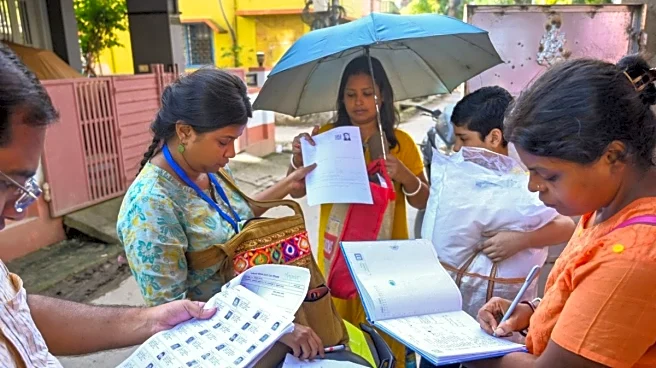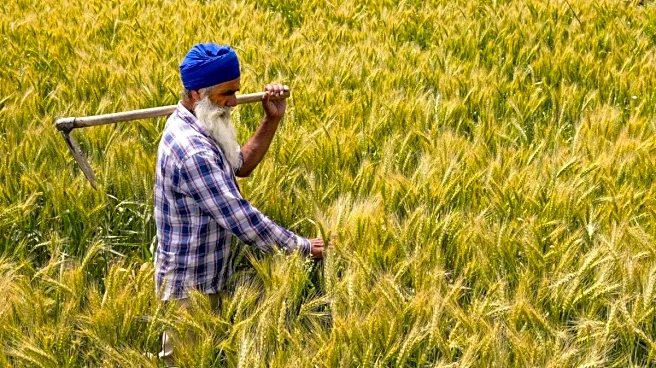Amid a rising political conversation around the recent deaths of Booth Level Officers (BLOs) in Kerala, Rajasthan and West Bengal, questions are being raised about the nature and intensity of the Election
Commission of India’s ongoing Special Intensive Revision (SIR) exercise.
While the Opposition’s reactions have brought the spotlight onto the process, the key issue is understanding what the SIR actually requires from BLOs on the ground, and how the 30-day workload is structured.
What Exactly Is SIR?
The SIR is not a routine annual update but a deep, door-to-door verification of electoral rolls. It requires BLOs to physically visit households, distribute fresh enumeration forms, collect them back, and ensure the revised details are uploaded.
Unlike summary revisions, the SIR also asks voters to provide information that was originally captured during the last SIR conducted in 2002-2004, such as their Legislative Assembly Constituency (LAC) details, booth number and serial number.
With more than two decades having passed since the last such exercise, most electors do not remember these identifiers, meaning BLOs often have to spend additional time clarifying or helping fill in the details. BLO associations and unions say this aspect of the exercise has added to the ground-level workload, even though the overall framework of SIR remains clearly defined on paper.
What Is A BLO Assigned Under SIR?
Each BLO is responsible for one booth within an assembly constituency. Their task is straightforward on paper:
- Distribute the enumeration forms to all electors linked to their booth
- Return for a second round to collect the filled forms
- Ensure the details are digitised as required
How Many Voters Fall Under One Booth?
Across India, booth size varies, but political parties commonly estimate that a booth covers around 1,000 voters (typically 800–1,200).
How Many Households Does This Usually Mean?
Parties and field functionaries calculate that these 1,000-odd voters come from roughly 300 households.
What Timeline Has The EC Set?
The Election Commission has allocated 30 days for the entire field exercise. The SIR schedule runs from 4 November to 4 December, giving BLOs a one-month window to cover all households twice.
How Many Visits Does This Entail?
Two rounds per household:
- One visit to hand over the forms
- One visit to collect them back
This means a BLO must complete 600 household interactions within the 30-day period.
What Does This Translate To Per Day?
To remain on track, a BLO needs to cover 20 households per day-around 10 for distribution, and around 10 for collection. In many areas — villages, dense urban colonies, small towns — these households are located in close proximity, often along a single street or cluster.
Is Covering 20 Households Daily Excessive?
On paper, this figure does not appear extreme. For comparison, delivery workers for major e-commerce platforms typically cover 30–60 stops a day in similar neighbourhood layouts. This is why some argue that the fieldwork alone should not be overwhelming.
The Debate Around BLO Deaths
In West Bengal, the recent death of a BLO in Jalpaiguri has set off a political confrontation, with Opposition parties alleging that the ongoing SIR exercise has created untenable pressure on field staff. Chief Minister Mamata Banerjee and senior TMC leaders have linked the incident to the workload associated with the revision drive, with the Congress echoing similar concerns.
The BJP has pushed back strongly, rejecting the allegation that the SIR exercise is responsible and accusing the Opposition of politicising a sensitive issue. BJP leaders, including Suvendu Adhikari and Amit Malviya, have claimed that factors unrelated to the SIR may have contributed to the incident and have alleged that the state administration is attempting to shift responsibility onto the Election Commission.
“We have inquired about the incident. I have come to know that because of pressure from her senior officials of the state government, she was under immense stress and committed suicide,” Adhikari alleged.
BJP spokesperson Pradeep Bhandari said Mamata Banerjee was blaming the ECI as her infiltrator-driven voter base was collapsing due to the SIR. “The SIR has exposed thousands of illegal additions, clusters of voters with identical documents, Bangladeshi and Rohingya infiltrators used as political capital. For 14 years, TMC protected this vote-bank through fear. Now that the ECI is cleaning it up, Mamata is panicking,” he said.
Mamata Banerjee is again blaming the Election Commission to protect her infiltrator-driven voter base that is collapsing under the Special Intensive Revision (SIR).
The SIR has exposed:
•Thousands of illegal additions
•Clusters of voters with identical documents… https://t.co/wC1stK2PSe
— Pradeep Bhandari(प्रदीप भंडारी)🇮🇳 (@pradip103) November 19, 2025
Where The SIR Stands Across States
According to the Election Commission’s daily bulletin, 98.89 per cent of the 51 crore electors across the 12 SIR states and UTs have already received their forms. Digitisation, the stage that follows collection, stands at 20.19 per cent, with expected variation depending on state size and sequencing.
Kerala has currently digitised 3.39 per cent, Uttar Pradesh 6.14 per cent, West Bengal 20.59 per cent, Tamil Nadu 21.99 per cent, and Madhya Pradesh 30.35 per cent, while smaller territories such as Goa (54.08 per cent) and Lakshadweep (46.06 per cent) naturally show quicker turnaround.
The SIR is currently underway in Chhattisgarh, Goa, Gujarat, Kerala, Madhya Pradesh, Rajasthan, Tamil Nadu, Uttar Pradesh, West Bengal, Puducherry, the Andaman and Nicobar Islands, and Lakshadweep. On Monday, the EC also ordered a separate ‘Special Revision’ of Assam’s electoral rolls, ahead of the state’s upcoming polls.










/images/ppid_59c68470-image-176347003451191506.webp)


/images/ppid_a911dc6a-image-176344710072016371.webp)
